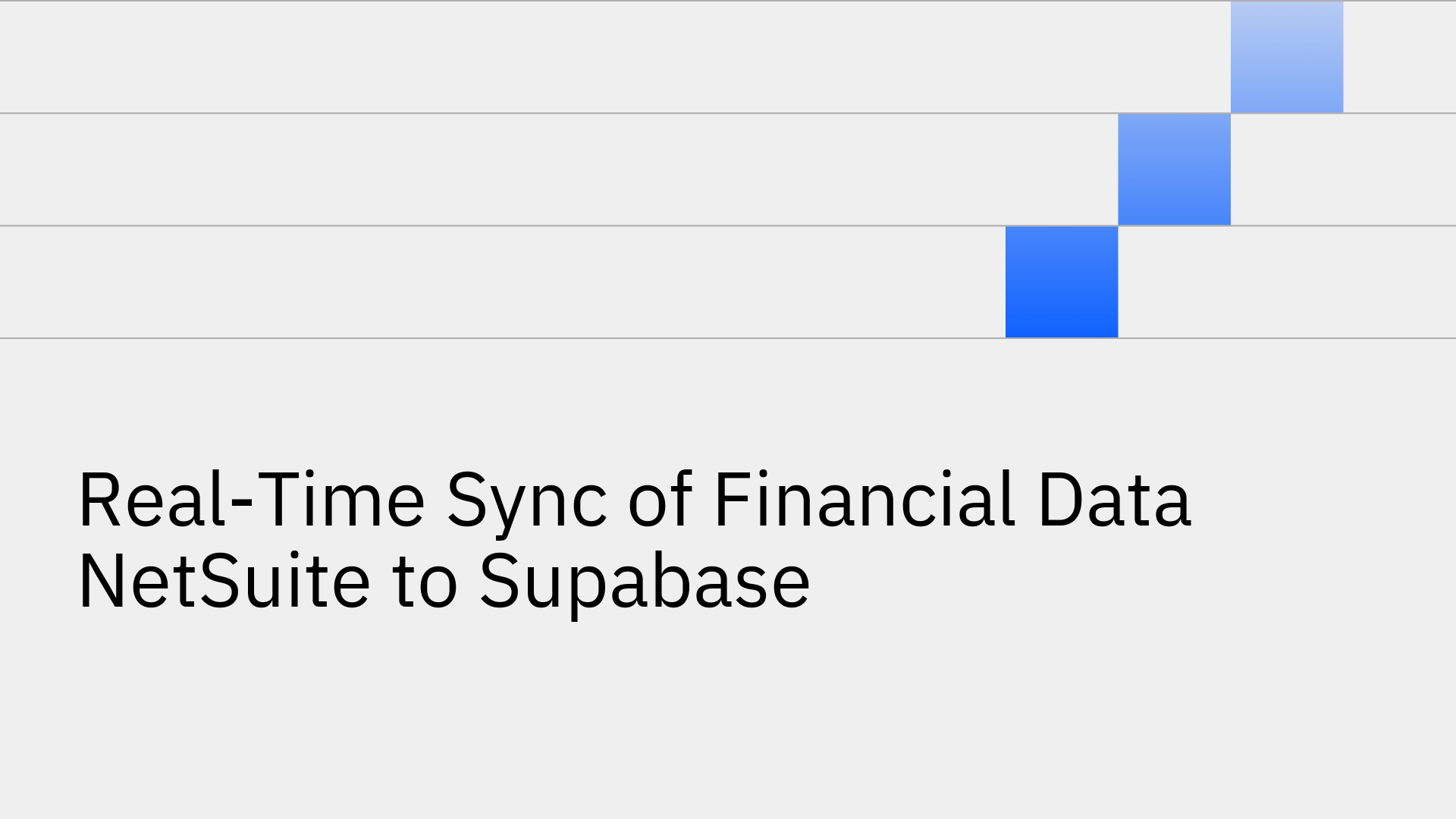
Businesses depend on NetSuite as their system of record for critical financial data. Simultaneously, development teams are building modern, responsive applications using powerful platforms like Supabase. The core challenge is bridging this gap. For accurate reporting, performant internal tools, and engaging customer-facing applications, the ability to sync financial data between netsuite and supabase in real time is not a luxury it's a necessity.
This article explores the methods for achieving this synchronization. We will detail the significant challenges of building and maintaining a custom integration and introduce a streamlined, real-time solution designed to eliminate this complexity and mitigate the associated risks.
NetSuite is a comprehensive cloud ERP that serves as the central repository for essential financial information, including invoices, payments, and customer records. However, accessing this data programmatically involves navigating NetSuite's various APIs. Developers must choose between SOAP, REST, and SuiteQL, each with its own authentication requirements and learning curve, demanding significant development resources to master [5]. The API itself is extensive, offering access to a wide range of records and schema definitions that require careful study [4].
On the other side is Supabase, a popular open-source Firebase alternative built on PostgreSQL. It empowers developers to build applications rapidly with features like authentication, storage, and a powerful database backend. A key feature is its Realtime Engine, a globally distributed Elixir cluster that allows developers to listen for database changes and broadcast messages instantly via WebSockets [8]. This enables highly responsive user experiences by working with a clear protocol [7] and well-defined concepts [6].
The central problem is clear: connecting NetSuite’s structured, complex ERP environment with Supabase’s modern, real-time database architecture is a formidable technical hurdle. A poorly executed integration can lead to data inconsistencies, security vulnerabilities, and a significant maintenance burden.
Integrating NetSuite and Supabase unlocks several powerful business and technical use cases by making financial data accessible and actionable in real-time across the organization. The challenge of unifying financial data is not unique to NetSuite; it's a common issue across platforms [2].
There are two distinct paths to achieving this integration: the complex, resource-intensive manual approach and the efficient, real-time approach with a dedicated synchronization platform.
Building a custom sync solution from scratch is a significant engineering undertaking fraught with hidden costs and risks. The process involves:
This manual method is expensive, brittle, and diverts valuable engineering resources away from core product development. The resulting integration is rarely real-time and requires constant maintenance to adapt to API changes and evolving business needs.
Stacksync is a no-code platform engineered specifically for real-time, bidirectional data synchronization. It is designed to eliminate the engineering overhead, cost, and unreliability associated with manual integrations. With Stacksync, you can establish a robust pipeline between NetSuite and Supabase in minutes, not months.
Key features that make this possible include:
Setting up a real-time sync with Stacksync is a straightforward, four-step process designed for both technical and non-technical users.
Step 1: Connect Your Applications In the Stacksync dashboard, connect your NetSuite and Supabase accounts using secure, one-click authorization methods like OAuth. There's no need to manually manage API keys or tokens.
Step 2: Choose Your Data Select the NetSuite objects you want to sync, such as Customer, Invoice, or SalesOrder. Stacksync can either sync this data to an existing table in Supabase or automatically create a new, perfectly structured table for you.
Step 3: Map Your Fields Stacksync automatically suggests field mappings between NetSuite and Supabase. You can review these mappings, make adjustments, and include any custom fields with a few clicks. The platform seamlessly handles differences in data types between the two systems.
Step 4: Activate the Sync Once your configuration is complete, activate the sync to begin the real-time flow of data. You can monitor sync status, inspect logs, and manage any issues from a centralized dashboard, giving you complete visibility and control. The entire process is designed to be simple, whether you are setting up a Supabase and Netsuite sync or enabling other Supabase two-way sync integration and workflow automation.
While the need to sync financial data between NetSuite and Supabase is clear, the traditional method of building custom integrations is fraught with complexity, cost, and inefficiency. This approach creates data latency and drains engineering resources that could be better spent on innovation.
Stacksync provides a fast, reliable, and no-code solution purpose-built for real-time data synchronization. By eliminating technical barriers, Stacksync empowers your development and finance teams to break down data silos, accelerate development, and build modern, data-driven applications.
Ready to unlock the full potential of your financial data? Start your free 14-day trial today and see how easy real-time integration can be.